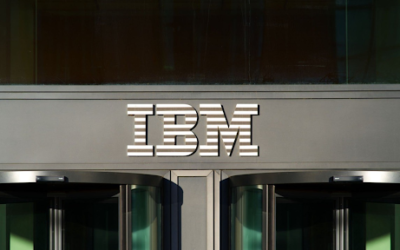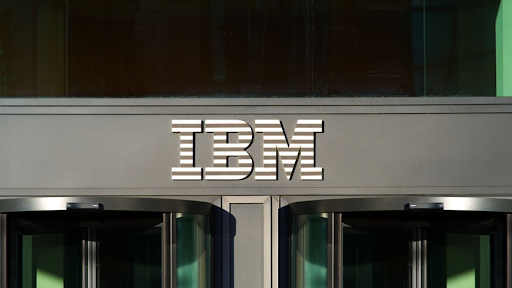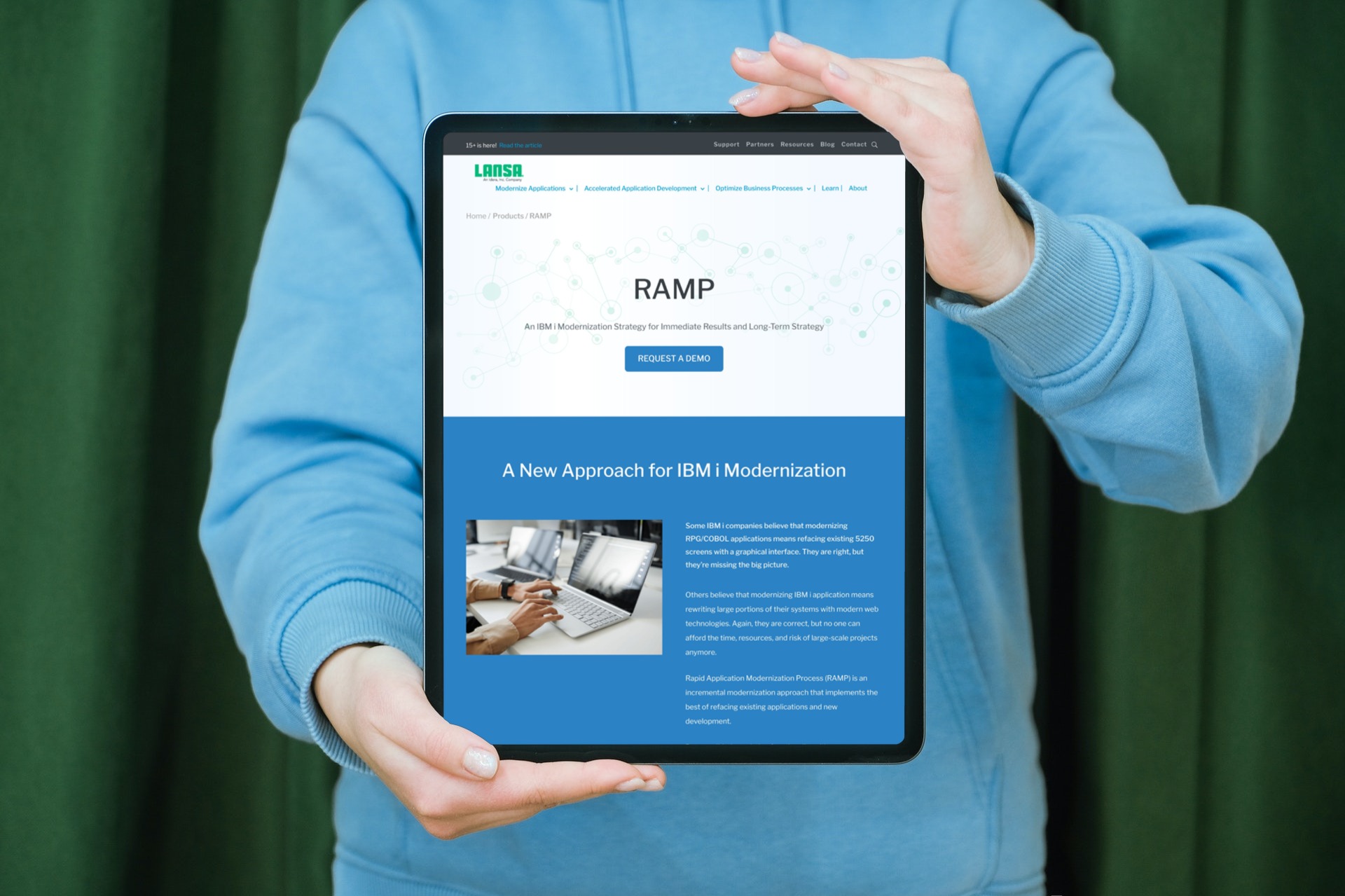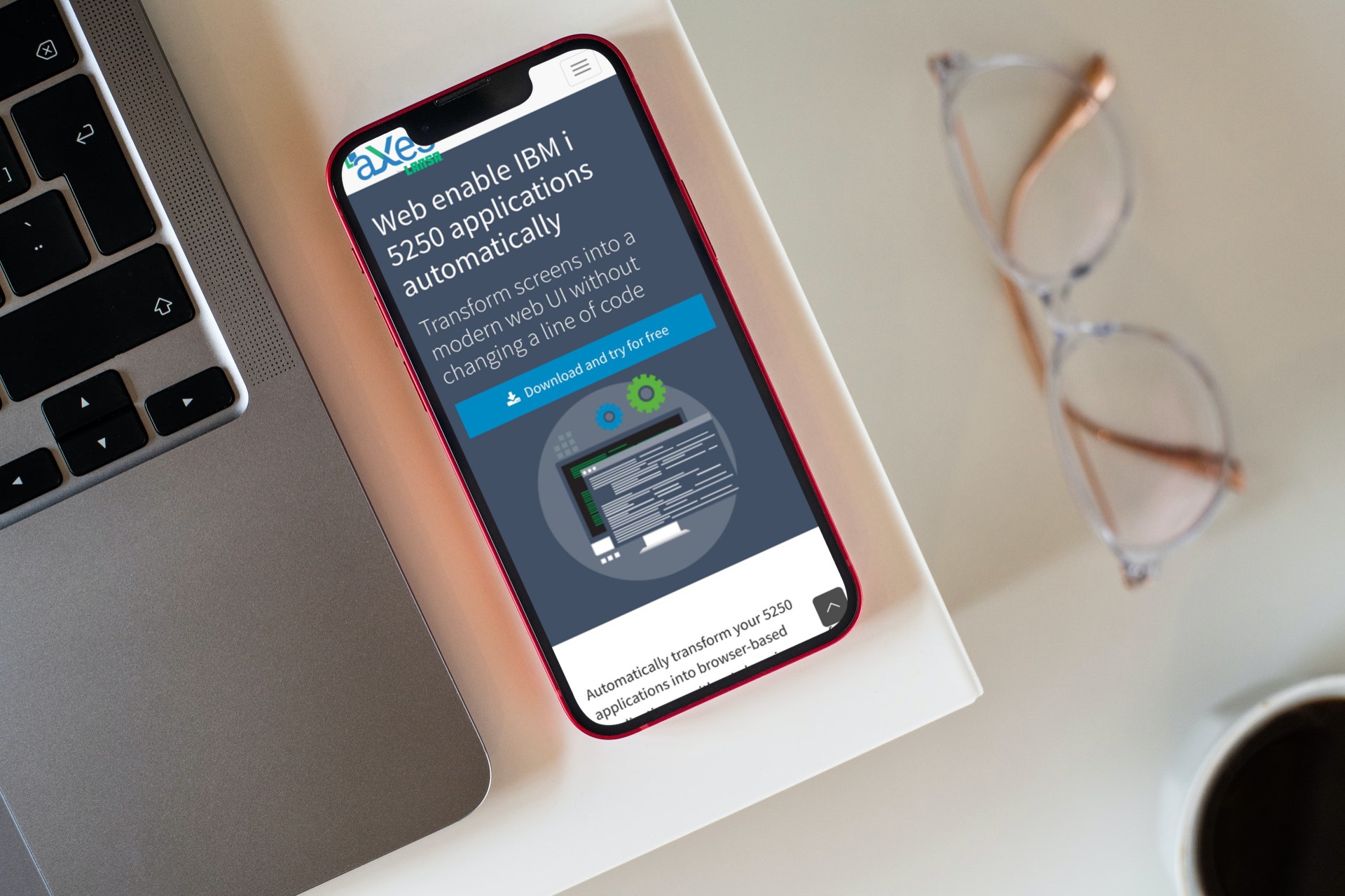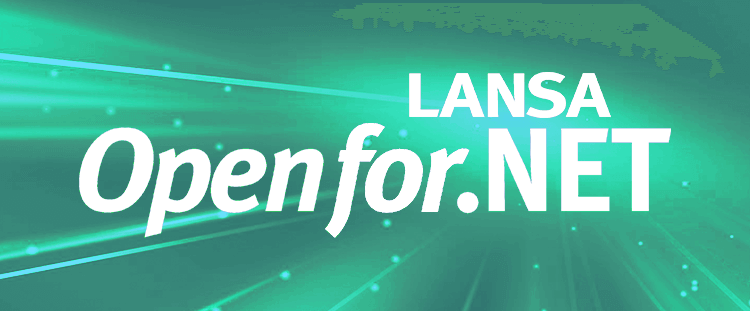Financial companies are increasingly disrupting the marketplace with innovations that leave banks working hard to keep up. So, legacy application modernization in banking sector provides clients with fast and convenient transactions. A legacy banking system is a platform that is decades old yet still supports the back-end infrastructure for critical financial services like transaction processing, account registration, and loan approval. Its outdated software components lack the compatibility required for advanced solution integration. In some cases this means the platform is IBM i.
Modern clients are used to receiving immediate results, or they will switch. In this regard, legacy application modernization in the banking sector not only reduces the task complexity but also accelerates project delivery. Legacy application modernization is a process of updating, upgrading, or improving existing or legacy apps to integrate the latest computing approaches, including modern languages, cloud infrastructure, and frameworks.
In this article, we will discuss the importance of legacy application modernization in the banking sector. Moreover, we will also discuss the benefits and challenges businesses may face in modernizing their outdated banking systems? Let’s get started!
Why is it vital to modernize legacy applications in the banking sector?
Banks are reluctant to adapt to new technological innovations, owing to stringent restrictions and out-of-date core platforms that keep them tied to decades-old legacy systems. Although, these outdated banking platforms, while still performing their functionalities. But, they are unable to keep up with clients’ demands for speed and advanced capabilities.
Core financial services such as payments, accounts, loans, and mortgages are still supported by outdated software. However, due to some potential customer pain points, it is important to modernize the legacy applications in the banking sector:
- Rapidly changing conditions
- Low developer productivity
- Lack of talent
- No easy way to innovate
- Difficulty integrating
- Modern usage limitations
- High cost of maintenance
- Scaling to growing business needs
With digital innovations such as artificial intelligence (AI), big data analytics, and cloud computing transforming the consumer marketplace, banks must keep up with technological advancements to satisfy a growing number of demanding customers.
What are the benefits of legacy application modernization in the banking sector?
Banks achieve the following key benefits by modernizing their legacy applications:
Advanced digital capabilities
Banks may integrate advanced software and keep up with the demands of our digital world by modernizing their legacy core platforms. Moreover, Banking systems can stay compatible with modern application programming interfaces (APIs) and take advantage of hot technologies like web services, artificial intelligence (AI), cloud computing, and data analytics.
Streamlined business processes
By using modernized banking applications, banks can count on better use of resources, increased productivity, and revenue growth. So, Legacy application modernization in the banking sector can improve performance, drive growth, and streamline the business processes for further new opportunities.
Better customer experience
Advanced banking software makes it possible to add features that improve service and product development. It also protects users from frustrating slowdowns and crashes that they experience with legacy systems.
Improved security and compliance
Legacy systems are unable to keep up with the latest upgrades and security patches. So, they are more susceptible to cyber-attacks and data breaches. Banks can keep up with today’s security standards and laws by modernizing their outdated software.
Greater cost-efficiency
The digital transformation of significant legacy systems may require large investments, but it will result in increased efficiency and productivity, which will help offset the expenses. In the long run, it’s also easier and less expensive to maintain and upgrade.
Leveraging the value of data
A modern banking system paves the way for comprehensive data analytics, allowing financial organizations to achieve their business objectives, identify areas for development, and take opportunities. It gives you useful insights that help you make better decisions.
Encouraging a culture of innovation
By modernizing the system, financial companies may move away from legacy specialists, who are becoming increasingly scarce and expensive, and instead, create an innovative culture that attracts top tech talent.
What challenges does your business face in legacy application modernization in the banking sector?
Legacy banking applications are unable to support the market’s growth expectations and expose banks to more risk and liability. Here, we will discuss some challenges that banks may face in legacy application modernization:
Cost
Modernizing legacy banking systems is costly, especially when you consider licenses, hardware, data migration, and implementation. Because your organization won’t see a return on investment (ROI) for several years, you may have difficulty convincing senior management to prove the worth of your ideas.
The best solution to overcome this problem is to implement the legacy application modernization process in different stages. First, modernize the core business processes. This will be less expensive and disruptive than an entire modernization of financial legacy systems, and it may be easier to sell to key decision-makers.
Impact on business as usual (BAU)
Banks cannot afford system disruptions, especially those that last for an extended period. It’s best practice to modernize the legacy banking system in stages to ensure continued service. Consider carefully the time and scope of the software upgrade to minimize its impact on business-critical activities.
Integration
Mostly, banks modernize the core legacy components and then try to make them compatible with modernized technology. So, you should plan the modernization in such a way that, in the future, you can integrate more modern solutions such as APIs and web services. Put efforts to gain a complete understanding of the complex modules or dependencies that the new system will create.
Data migration
Financial companies can be devastated by data loss. Data migration can be challenging in the banking sector because the outdated infrastructure stores gigabytes of data. Therefore, Developing an executable legacy data migration plan will assist in ensuring a seamless data transfer and keep you prepared for unforeseen events.
Employee buy-in
People become used to legacy systems, so be prepared to face resistance to change. You’ll be able to meet the challenge with the support of a comprehensive change management system.
Make sure it contains a communication strategy that effectively communicates the enhanced system’s benefits and encourages employee buy-in. No challenges should prevent you from taking the next step toward improving your financial system’s competitiveness. You’ll have to go through some standard operating procedures to complete the legacy application modernization process.
How do LANSA’s IBM i Modernization solutions help to overcome challenges you face in the legacy application modernization in the banking sector?
LANSA IBM i modernization solutions offer modern components and advanced features that help you modernize the legacy banking applications. The method for resolving each of these modernization errors, as well as others, is the same. However, LANSA’s tools and solutions have evolved significantly over the years.
LANSA IBM i solutions now include several cutting-edge improvements intended to overcome the IBM legacy application modernization challenges in the banking sector. All of this is an addition to the Visual LANSA platform, which makes use of the rising popularity of low-code development methodology.
LANSA modernization tools offer the features that are listed:
- Boost efficiency with scalability and agility
- Gain greater insights
- Improve security and reduce risk
- Optimize IT costs
- Innovate faster
- Create an agile and strategic workforce
Why should you choose LANSA in your legacy application modernization?
LANSA enables businesses to develop more efficient and accelerated business line applications that support cross-platform or flexible deployment and integrations.
Visual LANSA low code platform helps you to build simple and scalable enterprise-level applications. Over the years, lots of companies have successfully modernized the IBM i AS400 legacy applications with the help of LANSA’s platform. Organizations of various sizes can create new apps and combine them with other legacy components of their IT systems by utilizing Visual LANSA and their existing development resources.
One of LANSA’s solutions designed exclusively for IBM I green screen modernization is called aXes. aXes is used to automate the development of IBM I apps that support the web. It enables businesses to quickly convert their current IBM I 5250 apps into web pages without changing the source code.
If you are not sure about whether LANSA’s tools can satisfy all of your professional needs, then, based on your input data, LANSA will provide a free Proof of Concept (POC) of your project. Simply complete the form on our website.
Are you ready to modernize legacy banking apps? To start leveraging Visual LANSA for your app development and modernization requirements, get in touch with us.





